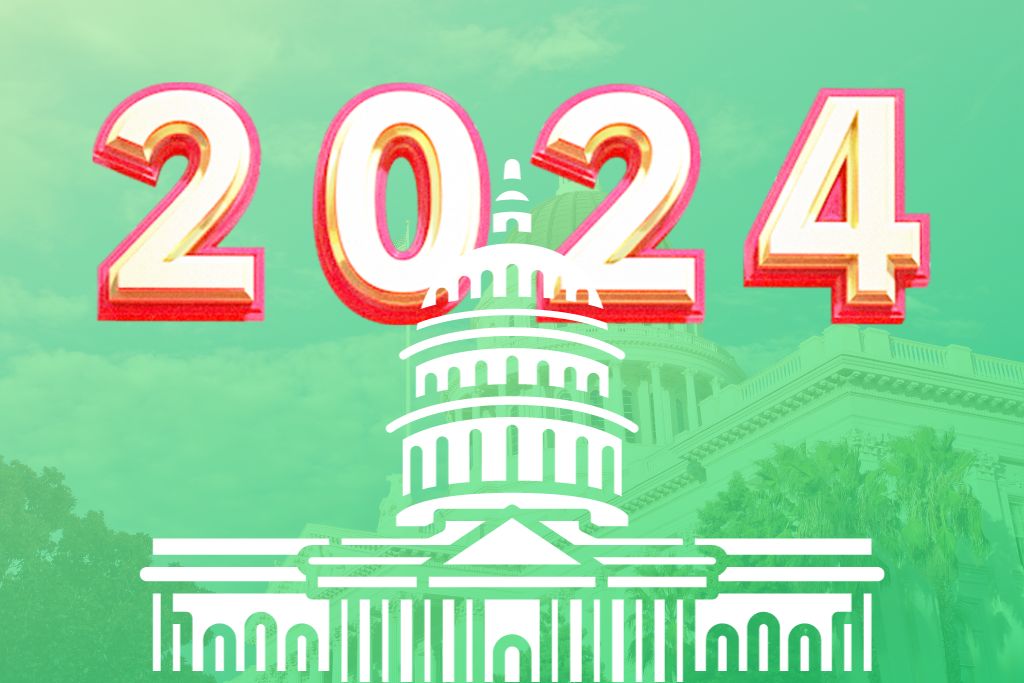The Year Ahead in California Climate Laws
Facing a $37.9 billion deficit, California’s 2024 legislative session is likely to be about minor fixes, cleanup bills, and the ballot box. Plus: Will 2023’s disclosure bills get funded?

Though I do not have a crystal ball — wish I did! — there are some clear markers we can evaluate to foresee environmental priorities, and possibilities, as we start another exciting year in the California Legislature.
The California Legislature kicked off the 2024 session on January 3 with notable changes in leadership. Robert Rivas, who represents the 29Assembly District, primarily based in Salinas, began his first full term as Speaker of the Assembly. Speaker Rivas quickly made his imprint on the coming year with new committee assignments sure to lead to new perspectives. Speaker Rivas has authored numerous pieces of legislation on key environmental protection and environmental justice issues over the years. Having an environmental champion in the speaker’s office is a good sign for 2024’s prospects.
What’s more, California has seen some really innovative and ambitious climate resiliency legislation in recent years. As my colleague Julia Stein noted in this lookback post, recent bills tackled some of our toughest environmental challenges in the areas of climate disclosures, single-use plastics, and housing. For two consecutive years, the governor has set aside surplus funds for programs and initiatives to combat climate change to the tune of $58 billion. While this year certainly won’t be an exception in terms of legislators’ and their constituents’ commitment to environmental protections, we may see a shift in the type of environmental bills that advance for a variety of reasons, including budget constraints. As we’re contemplating the legislative year to come, it is important to understand the political landscape surrounding this legislative session.
The budget deficit has been looming large in the minds of many Californians—and lawmakers—since the legislative analyst first predicted a massive shortfall, sending rumors swirling through the Capital corridor. Governor Newsom took to the stage last week to outline his 2024 proposed budget. He also attempted to alleviate fears and reaffirmed his commitment to promises made—including to the environment. His announcement of a $37.86 billion deficit is seen by many as more palatable than the earlier prediction of nearly $70 billion. During this presentation, the governor highlighted California’s climate commitment, which he touted as “second to none.”
All told, Governor Newsom is proposing California scale back climate funding by about 7 percent (compared to the 2023 budget) to $48.3 billion. He thanked the Biden Administration for its contribution of more than $10 billion, which allows the state to stay close-ish to the $58 billion goal for climate initiatives. This will include initiatives for zero emission vehicles, streamlining clean energy and transportation infrastructure, Climate Corps funding, Klamath Dam removals, Salton Sea restoration, and 30×30 biodiversity commitments. However, sacrifices will be made, as not all of California’s climate initiatives will be funded in this proposed budget, including grant and rebate programs for home energy efficiency upgrades and electric vehicles.
The most glaring omission in the climate resiliency space is the lack of funding for the ambitious climate disclosure laws that were signed in fall 2023. Funding to begin implementation of SB 253 and SB 261, which go into effect January 2025, was notably absent in the proposed budget. It will be worth watching the May Revision to see if any funds are injected into this space, specifically for the California Air Resources Board (CARB) to begin the implementation process. Many companies would be eager to push back the existing timeline for the new disclosure laws, especially when it comes to disclosing their so-called Scope 3 emissions. Hopefully, the final version of the state budget has funding to move these important laws forward. In light of this deficit, legislators have their work cut out for them as they try to find creative ways to scrimp and save while still providing critical resources for the state’s most vulnerable populations. As such, environmental bills with a hefty price tag will likely be held while those bills that offer some semblances of savings are likely to advance
It almost goes without saying that 2024 is an election year, with the primary just around the corner on March 5. Election years tend to result in safer topics advancing—allowing for more consensus. Legislators also look for locally tailored issues that help them show tangible results to their constituents. This is especially true for legislators in targeted districts with contested elections, thus they might not want to vote on ambitious environmental initiatives. As such, California may not see the expansive and ambitious environmental legislation we’ve grown accustomed to over the past few years. Instead, we will likely see a larger-than-usual number of bills that are streamlining measures, minor fixes, or what are known as “cleanup bills” that help implement other recent legislation.
In addition, it will be important to watch for environmental innovation through ballot measures. The Public Policy Institute of California (PPIC) noted that California voters “want to be active participants—and not just spectators—when it comes to environmental policymaking.” Therefore, advocates or business interests who might have a difficult time advancing their goals in the Legislature might make an end-run around the government by going directly to the people. We already know that a referendum to the 2022 legislation on oil and gas setbacks will be on the ballot; we should anticipate others.
In the coming weeks legislative priorities will become much clearer. The first deadline to keep in mind is January 31, which is when all bills that were introduced last year must pass out of their house (these are often called “two-year bills”).
Next up is February 16 which is the deadline for all new bills to be introduced. Once these dates have passed and policy committee hearings get into full swing, we’ll have a stronger sense of what’s gaining traction and what’s hitting the wall. I’ll be back here in March to analyze what environmental hot topics emerge, what obstacles arise, and where there is momentum—including some of the most important two-year bills. Until then, please feel free to reach out with any questions at ashjian@law.ucla.edu.
Reader Comments
One Reply to “The Year Ahead in California Climate Laws”
Comments are closed.







Hi Sabrina Thanks for this helpful summary. You say that the Governor has proposed to scale back climate funding to $48.3B but the Biden Admin is contributing $10B which allows the state to stay “close-ish” to it’s $58B goal for climate initatives. $48+10=$58, so my question is whether you are saying “close-ish” because the federal funding does not pay directly for California initiatives, or ….? Thanks for whatever explanation you can offer.